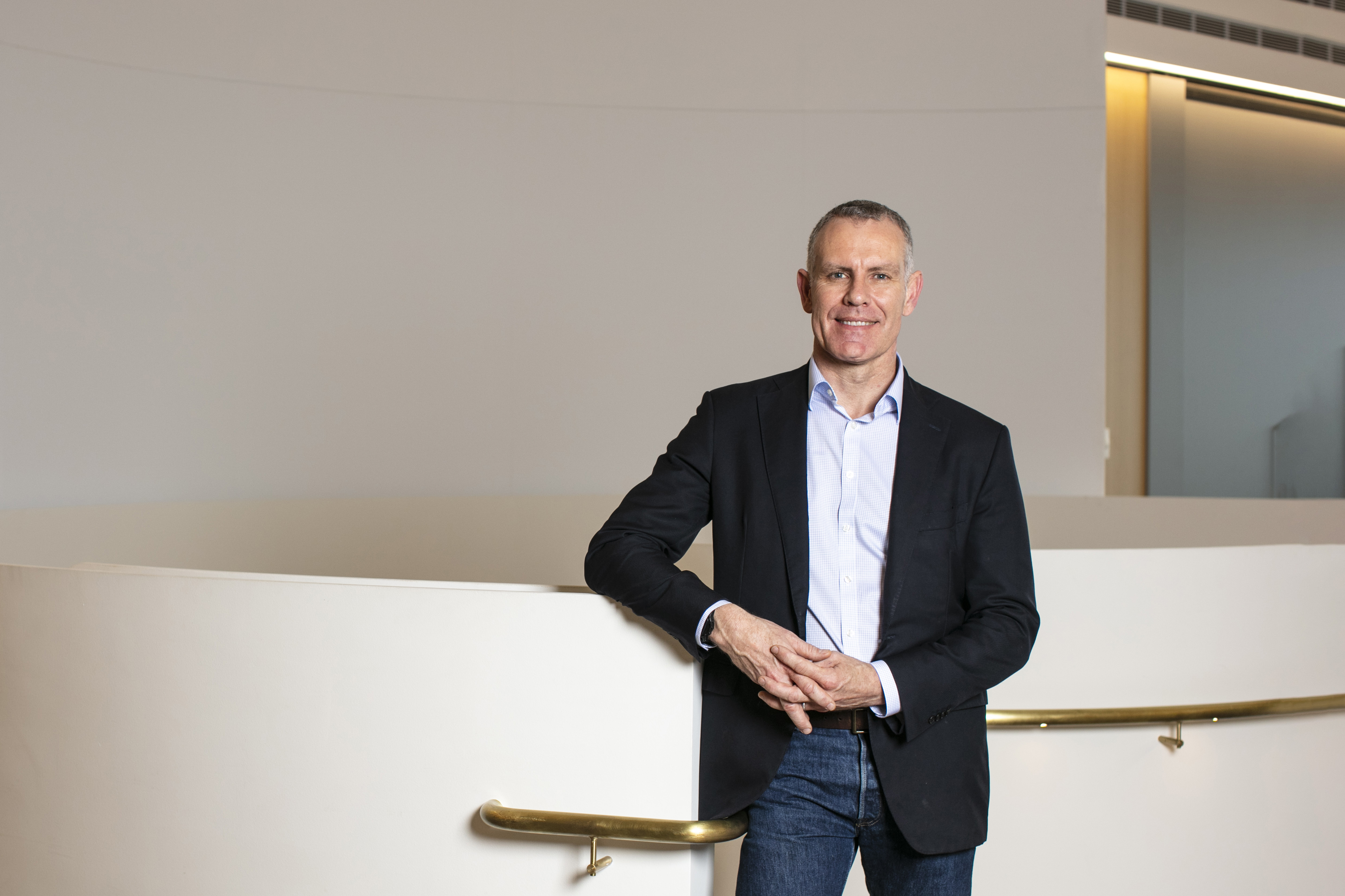EY refers to the global organization, and may refer to one or more, of the member firms of Ernst & Young Global Limited, each of which is a separate legal entity. Ernst & Young Global Limited, a UK company limited by guarantee, does not provide services to clients.

Chief Operating Officers (COOs) can accelerate transformation through embedding a "zero operations" mindset in their organizations.
In brief
- Reframing operations will drive end-to-end (E2E) journey transformation with higher returns on investment.
- COOs can enable faster and greater growth, accelerating the transformation of customer experience, cost efficiency, scalability and controls.
- In a complex operating environment, people benefit from the augmentation of their decisions and from being placed at the center of ongoing transformation.
To respond to ever more relentless customer demands while maintaining trust and stripping complexity and cost from operations, today’s banking COO must:
- Enable transparent, highly intuitive, personal and streamlined service delivery, primarily through digital self-service channels.
- Ensure innovative, automated operations with staff primarily focused on exception management, customer service and continuous improvement.
- Deliver scalable, sustainable, highly measured operations with the agility and discipline to shift rapidly with changing market, product and client needs.
- Ensure high-quality risk management, including data, privacy and resiliency.
COOs are under pressure to make operational activity faster, cheaper, safer and more sustainable. As most COOs are accountable for technology, they are critical to the future success of the bank.
Within this broad agenda, there are four aspects of transformation COOs should increase their focus on:
1) Reframe operations
To magnify the scale and speed of value creation, COOs need to work even more closely with their C-suite colleagues to reframe operations. Together, they must look at the bank’s highest possible proportion of operational activity, then apply the same or similar transformation levers across this expanded scope. For most banks, we believe this expanded view, which could include all servicing and “middle office” support activities post origination, would capture at least 30% to 35% more baseline headcount than currently defined solely in their operations functions. It’s an approach that will generate several advantages, including:
- Moving closer to the external customer service interactions in key value streams, making it easier to ultimately achieve end-to-end (E2E) journey transformation
- The increased ability to support innovative or disruptive products, channels and services that may be launched at speed
- A greater ability to drive consistency and simplification, reducing operational complexity, cost and risk
- A greater return on investment through increased economies of scale of transformation delivery
2) Move to a zero-operations mindset
To deliver this operational future state at scale and speed, COOs need to lead with and embed a zero-operations mindset across their organizations:
- Zero touch: 100% straight-through processing (STP) enabled by data-driven, predictive and proactive operations with embedded controls
- Zero latency: real-time processing, while ensuring compliance with data protection and privacy regulation
- Zero waste: elimination of activities that don’t create value for customers
- Zero breaks: ensuring quality with no defects or control failures
- Zero cost: elimination of “bad” cost, diverting that spend toward innovation at scale and agility to deliver sustainable growth
- Zero carbon: sustainable decarbonization of operational activities, including those provided by ecosystem partners and suppliers
Applying “Future-first” thinking, COOs need to ensure they define a vision such as this, signaling a change in mindset and perspective with a clear objective. It will drive much higher levels of consciousness on decisions. For example, although a fully digitized E2E journey may not be appropriate for all customer segments, it provides discipline around introducing human interaction at moments that matter. These include those ensuring financial inclusion and, in the UK, adherence to the recently introduced Consumer Duty regulations for retail banking customers.
As illustrated below, this approach will need to be delivered through unconstrained zero-based “leapfrog” initiatives, a robustly managed “stop” portfolio focused on ceasing non-value-adding tasks and an “incremental” portfolio that progressively contributes to the defined vision.
3) Empower humans
COOs and their teams face significant challenges delivering scale transformation, balancing distinct but highly interrelated priorities such as customer-centricity, cost efficiency and scalability, security, cloud, talent and risk management, and resiliency, all while keeping the lights on in a highly regulated environment.
The cognitive load on the workforce is increasingly demanding. There needs to be a greater focus on the augmentation of employees’ decision-making over time – requiring the execution of a defined decision-intelligence strategy integrated with existing automation and data strategies. Providing employees with recommendations and decision-making context to become more productive and make higher quality decisions more consistently and potentially faster will support the scale and speed of transformation.
Many current perspectives on this emerging topic focus on how technology, such as artificial intelligence (AI) and machine learning (ML), may be applied to augment decision-making, such as for faster and more accurate fraud investigations. This is too narrow a viewpoint to successfully unlock meaningful business value. Decision intelligence is a blend of managerial science, decision theory, social science and data science, necessitating multi-disciplinary teams whose composition will evolve.
Augmenting human effort through decision intelligence is one enabler to humans making greater contributions to ongoing operational transformation and execution of business as usual. More broadly, EY research with Oxford Said Business School found that organizations that put humans at the center of transformations are 2.6 times more likely to succeed than those that don’t. The research also highlights the importance of clearly and frequently articulating banks’ transformation vision and strategy.
4) Setting the sustainability example
Recent EY analysis has found that more than 80 of the world’s 100 largest banks have committed to net zero by 2050. Banks must drive toward these commitments with a zero-carbon vision to guide them in their operations – and with suppliers and ecosystem partners. COOs have a critical role to play, working with sustainability leadership in their organizations and ultimately aligning with the expectations of boards, shareholders, regulators and employers.
Banking COOs and their teams are likely to have accountability for a significant proportion of their organization’s employee base. They will directly influence material drivers of greenhouse gas emissions, such as real estate and business travel. COOs must ensure they recognize that their actions will effectively set the tone for the entire organization’s sustainability drive – and embed a zero-carbon mindset within an overall zero-operations strategy. It’s a significant responsibility.
A zero-operations strategy will likely result in deeper relationships with third parties, such as through greater use of industry utilities and managed services. COOs and their procurement teams will also need to recognize the importance of ensuring those organizations are aligned with the goals of the Paris Agreement and the broader regulatory environment.
EY's Andrew Wickham, Director, Banking Technology, Ernst & Young LLP has contributed to this article.
Summary
Bank COOs are increasingly critical to the success of the ongoing and accelerating evolution of their organizations. Incremental programs have often failed to deliver expectations. COOs need to be bold and lead their organizations toward a zero-operations vision, achieving an increased scale of innovation and speed of technology delivery.
Customer demands for highly intuitive, personal and streamlined service can be satisfied while operational complexity and cost are reduced. Bold COOs and their colleagues will achieve a better, faster, cheaper, safer and more sustainable bank.
How EY can Help
-
EY and EY-Parthenon can help you devise a strategy to realize your ambition: powered by technology, shaped by your portfolio and executed by transformation.
Read more
Related articles
How do you harness the power of people to double transformation success?
Read about how EY and the University of Oxford explored the emotional cost of failed transformations and what it takes to get them right.
How can banks generate greater value through improved customer service
Effective customer service transformation requires both cost reduction and a value-generation strategy built on technology and people. Learn more.




